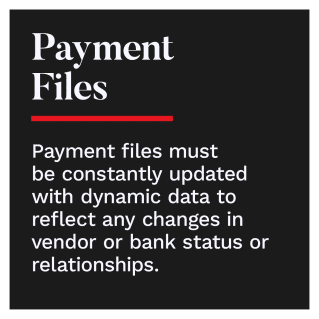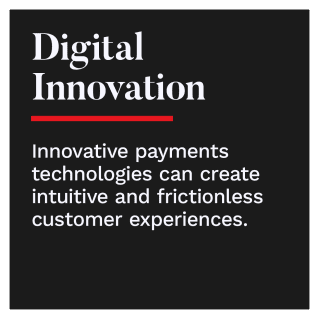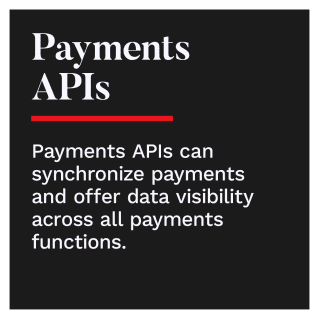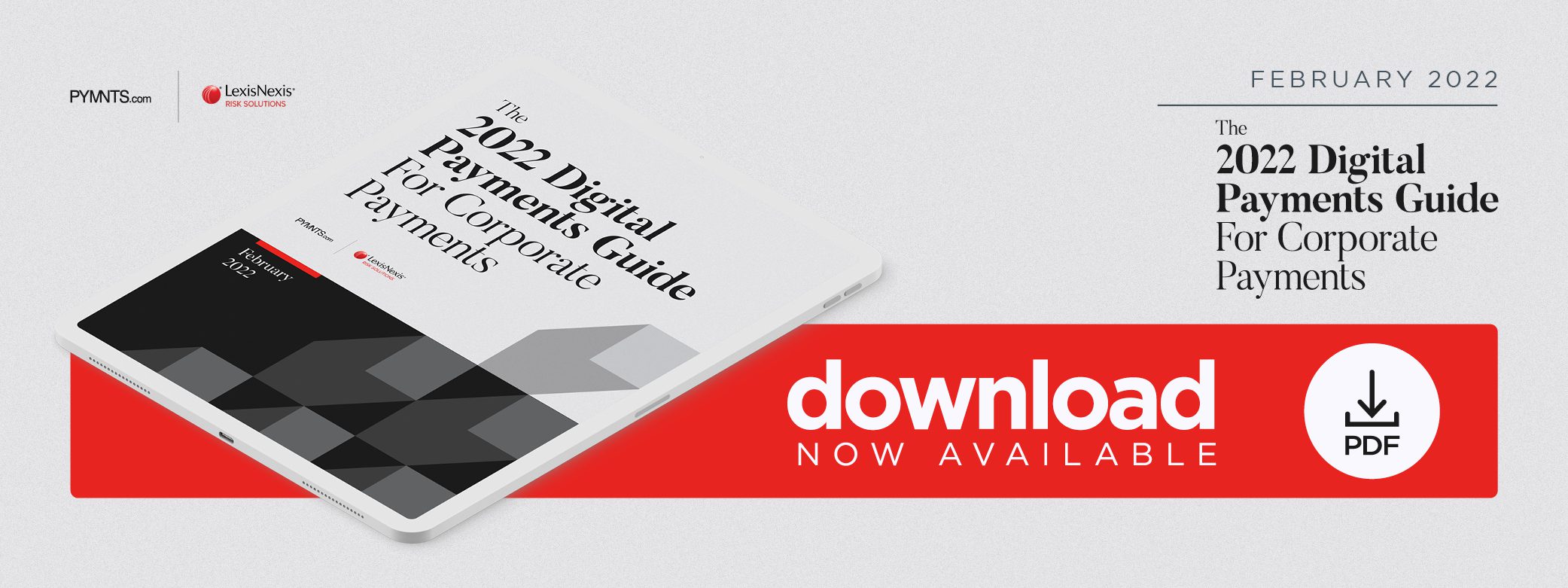Report: How Solving the Payments Compliance Puzzle Fuels Global Business Growth

The digital shift in the early months of the pandemic made digital payments imperative for many businesses. Not only is implementation a challenge, but it can introduce new risks, ranging from non-compliance with national and international know your customer (KYC) regulations to transaction fraud.  At the heart of smart digital payments management is consumer and bank data. Cleanly acquiring data, validating it and properly managing it is key to digital payments success.
At the heart of smart digital payments management is consumer and bank data. Cleanly acquiring data, validating it and properly managing it is key to digital payments success.
In The 2022 Digital Payments Guide For Corporate Payments, a PYMNTS and LexisNexis collaboration, we examine the risks of payments digitization and the steps corporates can take to ensure compliance and long-term strategic growth.
Digital payments management can be a linchpin of growth for corporates, but only if payments processes are compliant, user-friendly for treasurers and simple to integrate with vital enterprise resource planning (ERP) data. A savvy ERP strategy leverages Big Data to inform everything from workflow management to technology adoption and risk management policy, allowing organizations to optimize core business operations and support long-range fiscal goals. The success of any ERP initiative, however, is wholly dependent upon key drivers of business growth — such as digital payments processes — operating seamlessly.
 Additionally, corporates need the right tools or third-party technology solutions to manage the sheer volume of financial data — especially bank master data, which can make or break payments processes. Amidst the billions of bytes of data organizations generate and process every year, bank master data is among the most difficult to manage manually and the most critical to business operations. Effective bank master data management requires a robust ERP platform with seamless integrations with payment services or, if monitored manually, constant vigilance and access to comprehensive, up-to-date global banking data.
Additionally, corporates need the right tools or third-party technology solutions to manage the sheer volume of financial data — especially bank master data, which can make or break payments processes. Amidst the billions of bytes of data organizations generate and process every year, bank master data is among the most difficult to manage manually and the most critical to business operations. Effective bank master data management requires a robust ERP platform with seamless integrations with payment services or, if monitored manually, constant vigilance and access to comprehensive, up-to-date global banking data.
Other key findings from the report include:
• Key payments data often changes. Comprehensive, accurate and easy to access data is inseparable from risk management, and corporates should be able to use their most valuable payments data at any time.
• Sanctioned banks may still initiate and receive transactions. Vendors and suppliers that do business with companies worldwide may bank virtually from anywhere, and this adds a measure of risk to each global transaction if controls are not in place.
• Financial technologies add complexity to compliance. As the rise of advanced financial technologies has made regulatory compliance more complex for financial institutions (FIs) and corporates, organizations need to be proactive in implementing compliance solutions early.
To learn more on how FIs and corporates can leverage ERP platforms to manage financial data and streamline digital payments, download the report.

